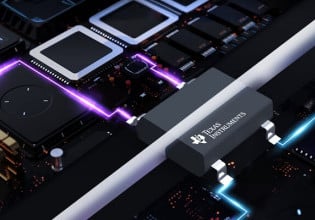The Need for Compliant, Efficient GaN Adapters in Medical Applications
When engineers choose power adapters, they are looking for efficient solutions compliant with safety standards. These requirements can be challenging but GaN adapters can help.
Globally, the demand for medical technology is growing rapidly with Statista reporting that the telehealth market alone has a projected value of $194.1 billion in 2023 and a $460 billion value by 2030.

From hospitals to homes, medical devices need power adapters that are safe, efficient, and compact. Image used courtesy of Pixabay
Whether the need is remote monitoring of glucose levels or portable X-ray equipment, these devices require power. When choosing power adapters, engineers need solutions that comply with applicable safety standards and provide power efficiently and in a small form factor. These can be challenging requirements to meet with traditional designs, but the introduction of GaN has enabled a new generation of smaller and more efficient medically rated power adapters.
GaN Semiconductors
GaN (Gallium Nitride) is a wide bandgap semiconductor material that has become a significant competitor against more traditional silicon-based semiconductors because of its superior properties. For example, compared to Si, GaN can withstand higher operating voltages, switch at higher frequencies, and is more efficient. These benefits have led to the increased use of GaN in transistors commonly found in power adapters.
GaN and Power Adapters
There are several advantages when using GaN semiconductor power adapters, including reduced losses, increased efficiency, reduced form factor, and reduced weight.
In a switching power supply, the primary source of power loss lies in the power transistors. Therefore, any reduction in these losses leads to enhanced efficiency. One approach to reducing these losses is using GaN as the semiconductor material in the power transistors.
There are two types of losses: conduction and switching.
Conduction losses occur when current flows through the transistor. When a transistor is on, the resistance between drain and source is RON. The conduction losses are directly proportional to RON, which means that if this resistance can be lowered, as well as the conduction losses. Figure 1 shows how RON vs. the breakdown voltage differs between GaN, Si, and SiC (Silicon Carbide), with GaN being the lowest.

Figure 1. RON vs. breakdown voltage for Si, SiC, and GaN. Image used courtesy of CUI Inc.
Switching losses take place during the transition between on and off states. GaN reduces these losses by supporting a higher switching speed (the speed at which transitions occur). During the switching transition, the current in a transistor will begin to flow before the drain-source voltage begins to fall and cause significant power losses due to the large volt-current product. The longer the transition takes, the more power will be dissipated during the transition. These losses occur at both turn-on and turn-off every switching cycle. This means that losses over time increase with switching frequency. GaN transistors turn on faster than Si and SiC, minimizing the transition time and reducing the associated losses, which enables higher switching frequencies.
In Si and SiC transistors, the body diode helps avoid a short-circuit condition during “dead-time,” during which the current still flows for a time when both switches of a half-bridge are off. This current is forced through the body diode, which leads to higher losses than having the current flow through the RON resistor.
In GaN transistors, switching losses are further reduced because they do not have a body diode, and the current flows through the more efficient RON resistor and results in a near zero reverse recovery charge.
As mentioned earlier, the most significant losses in a power transistor are conduction losses and switching losses, making them the primary source of inefficiency. Because GaN power transistors achieve lower conduction and switching losses, they are more efficient than their Si and SiC counterparts.
GaN adapters can offer a significant increase in power density. Reduced switching losses enable higher switching frequencies. The increased switching frequency allows the size of bulky components, such as transformers, inductors, and capacitors, to be reduced.

Figure 2. Form factor comparison between GaN and Si power adapters rated for 120 W. CUI’s GaN-based SDI120G-U displays a significant advantage in power density over Si-based SDI120-U. Image used courtesy of CUI Inc.
Another critical aspect of GaN is its thermal conductivity compared to Si-based transistors. Better thermal conductivity makes it easier to get heat out of the transistors and limits the need for bulky (and heavy) thermal management components such as frames, fans, and heatsinks.
What GaN Power Adapters Mean for Medical Applications
There is a rapidly growing demand for smaller, more lightweight medical devices, especially in telehealth and other applications that require portability.
Smaller form factors for power adapters make them easier to transport, manipulate, and utilize medical devices that depend on them. Furthermore, power adapters have long been noticeably heavy for users. Reducing that weight makes devices more portable, easier to move, and versatile.
Increased efficiency is always positive, but in the medical industry, this is especially necessary. High efficiency leads to lower power usage on the mains/ac side, lower stress on the branch circuit, and, potentially, more power for other devices.
This can be critical when lifesaving or life-preserving equipment is involved. For example, when there are high power demands, such as a disease outbreak that has increased both patient load and equipment demand, or in cases where limited power is available (such as natural disasters), power efficiency saves lives.
An added benefit of GaN power adapters involves the heat generated. Because GaN transistors are high efficiency and offer excellent thermal conduction, they will not heat up as much as their Si and SiC counterparts. Cooler operation is much more comfortable for the user and reduces the dangers associated with high-temperature components in a medical setting.
GaN Power Adapters from CUI Inc.
CUI has leveraged the benefits of GaN power transistors to develop a line of efficient, small form factor desktop GaN power adapters designed for medical applications.
Two new series in this product line are the class I rated SDM300G-U series and the class II rated SDM300G-UR series, which can each output up to 300 W and have a no-load power consumption of less than 0.5 W. These CUI GaN power adapters meet the latest efficiency standards DoE Level VI and the highly stringent EU CoC Tier 2, reducing power the power usage and demand for both hospitals, medical facilities, and homes.
A power density increase of up to 250% compared to Si-based power adapters, high efficiency, and lack of bulky thermal management components means these GaN adapters are lightweight with a compact form factor.
The CUI SDM300G-U and SDM300G-UR series of GaN power adapters comply with current IEC 60601-1 3rd edition for medical equipment, making them suitable for a range of medical applications.

Figure 3. GaN power adapters, such as the CUI SDM300G-U shown, provide more power in a smaller form factor while reducing the heat generated. Image used courtesy of CUI Inc.
In addition, they are available in various AC inlet cords (a 2-pin C18 for the UR series and the 3-pin C14 for the U series) for North America, Europe, the United Kingdom, Japan, China, and Australia.
Conclusion
CUI GaN-based power adapters meet the evolving needs of modern medical equipment, especially where telehealth is involved. The SDM300G-U and SDM300G-UR series meet three critical requirements of medical power supplies: efficiency, small form factor, and compliance with the latest standards. When a catalog does not meet customer requirements, CUI will work with customers to meet highly specific customization needs.






